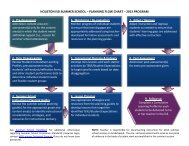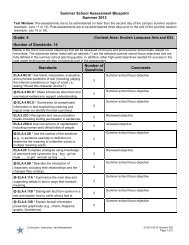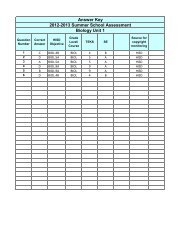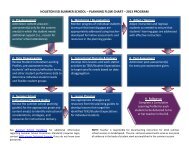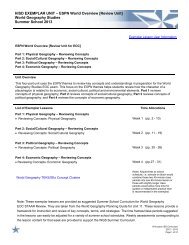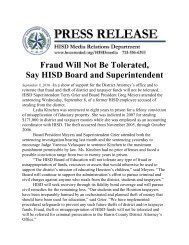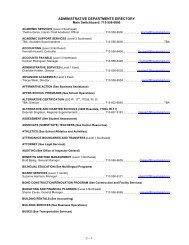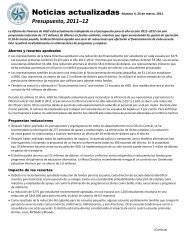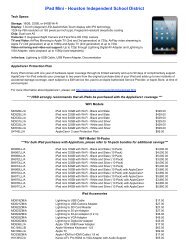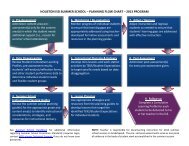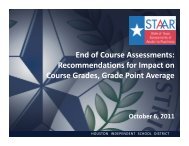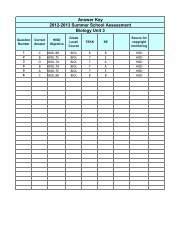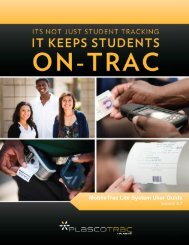SSK Unit 4.2 Planning Guide
SSK Unit 4.2 Planning Guide
SSK Unit 4.2 Planning Guide
- No tags were found...
Create successful ePaper yourself
Turn your PDF publications into a flip-book with our unique Google optimized e-Paper software.
<strong>Unit</strong> 4: Persuasive Texts<strong>Unit</strong> OverviewHISD PLANNING GUIDEEnglish Language Arts Grade 7SUMMER SCHOOL - English Language Proficiency Standards (ELPS) - Literacy Leads the Way Best Practices - Aligned to Upcoming State Readiness Standard- State Process Standard R - State Readiness Standard S - State Supporting Standard<strong>Planning</strong> <strong>Guide</strong> User InformationTime AllocationsPersuasive Texts– This unit is designed to build skills in understanding and analyzing persuasive texts. Throughoutthe unit, students explore word parts and examine the genres of persuasive texts and media. Students analyze anauthor’s message or claim, organizational patterns, persuasive techniques, and use of appeals and evidence. Studentsimprove their ability to create summaries and support inferences with text evidence.Texas Essential Knowledge and Skills/Student Expectations (TEKS/SEs) (district clarifications/elaborations in italics)Vocabulary<strong>Unit</strong> 41weekR ELA.7.2A Determine the meaning of grade-level academic English words derived from Latin, Greek, or otherlinguistic roots and affixes.ReadingELA.7.Fig19C Reflect on understanding to monitor comprehension (e.g., summarizing and synthesizing; makingtextual, personal, and world connections; visualizing).R ELA.7.Fig19D Make complex inferences about text and use textual evidence to support understanding.S ELA.7.11A Analyze the structure of the central argument in contemporary policy speeches (e.g., argument by causeand-effect,analogy, authority) and identify the different types of evidence used to support the argument.S ELA.7.11B Identify and analyze such rhetorical fallacies as ad hominem, exaggeration, stereotyping, or categoricalclaims in persuasive texts.S ELA.7.13A Interpret both explicit and implicit messages in various forms of media.S ELA.7.13C Evaluate various techniques used in media to influence and inform audiences. English Language Proficiency Standards (ELPS)• ELPS C.1g Demonstrate an increasing ability to distinguish between formal and informal English and an increasingknowledge of when to use each one commensurate with grade-level learning expectations.• ELPS C.1h Develop and expand repertoire of learning strategies such as reasoning inductively or deductively,looking for patterns in language, and analyzing sayings and expressions commensurate with grade-level learningexpectations.• ELPS C.2e Use visual, contextual, and linguistic support to enhance and confirm understanding of increasinglycomplex and elaborated spoken language.• ELPS C.4f Use visual and contextual support and support from peers and teachers to read grade-appropriate contentarea text, enhance and confirm understanding, and develop vocabulary, grasp of language structures, andbackground knowledge needed to comprehend increasingly challenging language.College and Career Readiness Standards (CCRS)• CCRS 1.A4 Recognize the importance of revision as the key to effective writing. Each draft should refine key ideasand organize them more logically and fluidly, use language more precisely and effectively, and draw the reader to theauthor’s purpose.• CCRS 1.A5 Edit writing for proper voice, tense, and syntax, assuring that it conforms to standard English, whenappropriate.• CCRS 2.A4 Draw and support complex inferences from text to summarize, draw conclusions, and distinguish factsfrom simple assertions and opinions.Key Concepts• genre– expository nonfiction(persuasive texts and speeches)• reading process• graphical components• stylistic elements• text features© Houston ISD Curriculum2012 – 2013Page 1 of 8




